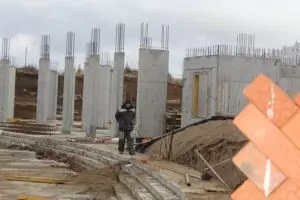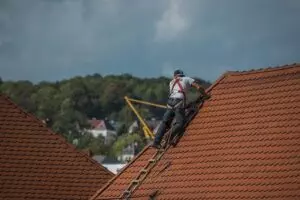Comprehensive Guide to Full-Home Pier and Beam Repair
Pier and beam foundations, common in unstable soil areas, require regular inspection and prompt repa…….

Pier and beam foundations, common in unstable soil areas, require regular inspection and prompt repair for structural integrity. Signs of damage like cracks, uneven floors indicate needing a professional Pier and Beam Foundation Repair using modern materials & techniques, including steel reinforcement and hydraulic fracturing. Costs vary based on damage severity, home size, and repair complexity; obtaining quotes from contractors is essential. Annual inspections and long-term maintenance, such as clearing debris, cleaning drainage, and applying waterproof coatings, prevent foundation damage.
Full-Home Pier and Beam Repair: Strengthening Your Structural Foundation
Pier and beam foundations are a common support system for many homes, especially in areas prone to shifting soil. Over time, these structures can wear, leading to structural integrity issues. This article guides you through the intricacies of pier and beam foundation repair, from identifying common problems to understanding the latest restoration techniques.
We’ll explore signs requiring repair, the step-by-step process, modern materials, cost estimates, and preventive strategies to ensure your home’s longevity.
Understanding Pier and Beam Foundations: Basics and Common Issues

Pier and beam foundations are a common structural support system found in many homes, particularly in areas with unstable soil or where there’s a need for increased load-bearing capacity. This foundation type consists of vertical piers, usually made of concrete or steel, which are spaced along the perimeter or interior of a building, supporting beams that distribute the weight of the structure evenly across the piers. Over time, various factors can lead to issues with pier and beam foundations, requiring expert Pier and Beam Foundation Repair.
Common problems include settling or shifting of the foundation due to soil movement, damage caused by pests like termites, corrosion from moisture or poor drainage, and structural degradation from age or exposure to environmental elements. Recognizing these potential issues early on is crucial for maintaining a solid home structure. Regular inspections can help identify minor problems before they escalate, ensuring that any necessary repairs are addressed promptly to prevent further damage and costly renovations.
Signs Your Home Needs Pier and Beam Repair

If your home is starting to show signs of structural damage, it might be time to consider pier and beam foundation repair. This type of repair is crucial for homes built on unstable soil or those experiencing settling issues. One of the first indicators that your home needs this type of attention is visible cracks in the walls or floors. These cracks can vary from thin hairline fractures to wider gaps, and they often appear in rooms with high ceilings or large windows.
Another sign to watch out for is uneven or slanted floors. If you notice that some areas of your home are lower than others, or if doors and windows have started to stick or jam, these could be early warning signs of foundation problems. Additionally, stuck or loose hinges on cabinets and doors, along with peeling paint or uneven baseboards, can point towards settling issues within the structure. Timely intervention through pier and beam foundation repair can prevent more severe structural damage down the line.
The Process of Full-Home Pier and Beam Restoration

The process of full-home pier and beam restoration involves several critical steps designed to return your home’s foundation to its structural integrity. It begins with a thorough inspection to identify damaged or rotting beams, piers, and supporting structures. Once identified, these components are carefully replaced or repaired using high-quality materials that match the original specifications.
Expert contractors then address any settling or misalignment issues by adjusting pier heights and reinforcing the beam structure as needed. This meticulous work ensures a stable and secure foundation for your home. Throughout the process, special attention is paid to aligning with local building codes and regulations for Pier and Beam Foundation Repair, guaranteeing both structural soundness and compliance.
Materials and Techniques Used in Modern Foundation Repair

In modern Pier and Beam Foundation Repair, a variety of materials and techniques are employed to ensure structural integrity and longevity. One commonly used material is steel, particularly for pier replacement or reinforcement. Steel beams are known for their strength and durability, making them ideal for supporting the weight of the structure while also withstanding environmental factors like earthquakes or heavy loads.
Techniques have evolved to include advanced methods such as hydraulic fracturing and vacuum excavation. Hydraulic fracturing involves using high-pressure fluids to create cracks in the soil, which are then filled with a structural material to enhance bearing capacity. Vacuum excavation, on the other hand, uses a powerful vacuum to remove soil without damaging underground utilities, ensuring precise and safe foundation repairs. These modern techniques complement traditional methods like pier injection and beam stabilization, providing comprehensive solutions for Pier and Beam Foundation Repair.
Cost Considerations for Pier and Beam Foundation Repairs

Pier and beam foundation repairs can vary significantly in cost, depending on several factors. The extent of damage is a primary determinant; minor issues like surface cracks or slight misalignments will have lower repair costs compared to severe structural problems that require extensive beams replacement or pier reinforcement. The size of your home also plays a role, as larger properties often necessitate more material and labor, driving up expenses.
Another crucial consideration is the complexity of the repair process. Simple fixes might be more cost-effective, while intricate work involving custom solutions or specialized techniques can significantly increase prices. Additionally, location can impact costs due to regional differences in material availability and labor rates. It’s essential for homeowners planning Pier and Beam Foundation Repair to obtain quotes from multiple contractors to ensure they understand the price range involved.
Preventive Measures and Long-Term Maintenance Tips

Regular inspections are key to identifying potential issues early on, allowing for swift action to prevent major repairs later. Homeowners should check their pier and beam foundation for any signs of damage or settling at least once a year. Look for cracks in the concrete, uneven floors, doors that stick, or walls that are not straight. Addressing these issues promptly can help extend the life of your pier and beam foundation repair.
Long-term maintenance involves keeping the area around the piers clear of debris and moisture. Regularly inspect and clean the drainages to prevent water buildup, which can lead to rot and compromise the structural integrity of the beams. Additionally, applying a waterproof coating to the concrete can provide an extra layer of protection against the elements. Keep trees and plants well-trimmed to avoid their roots encroaching on the foundation, as this can cause uneven settling.







